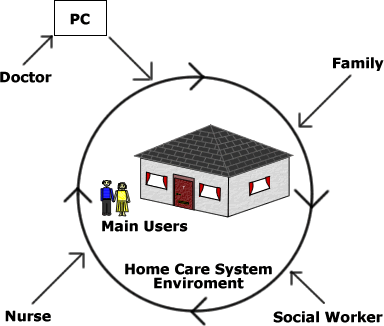Stakeholder User Groups
The MATCH project's home care system allows multiple users to interact with the system at any one time. This user group can be very different from what might be assumed as a typical user group. If we take an example of an elderly couple living in a home with a home care system, we would accept that they are the main users.
In most circumstances, the two main users would be the source of the majority of conflicts as they use the system the most. They may unwittingly contradict each other's choices. An example of this is system personalisation whereby users select their own preferences. Unless the system can allow individual preferences, one user setting reminders to be audio and the other setting them to be visual could be problematic.

The system can also be accessed by a number of secondary users depending on the circumstances. Examples of secondary users include the following:
Family: Relatives or neighbours may have access to the system depending on the situation of the end users. The secondary users may select options that conflict with the user's preferred settings.
Doctor: The user's doctor may have remote access to the system via a PC at the surgery to change settings that affect the patient's health. An example could be altering the intervals at which reminders are given to take medication. It may also be possible for the doctor to monitor the patient's health, e.g. blood pressure readings. An unusually high reading may prompt a visit from health professional.
Nurse / Social Worker: Other care professionals may access the system to create appointments for future visits.


